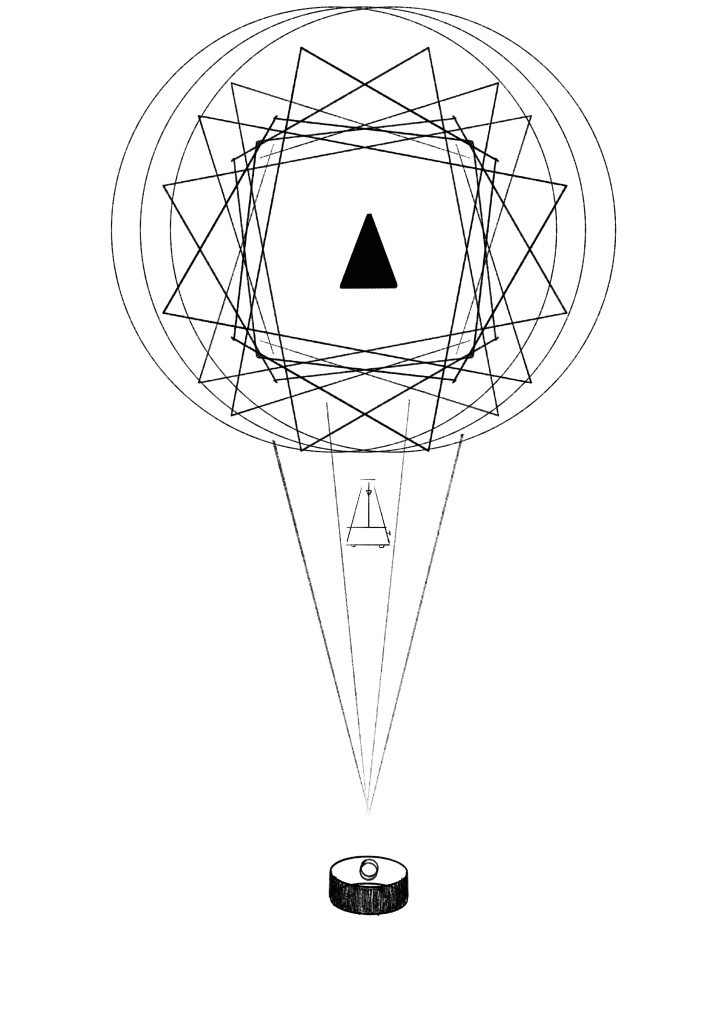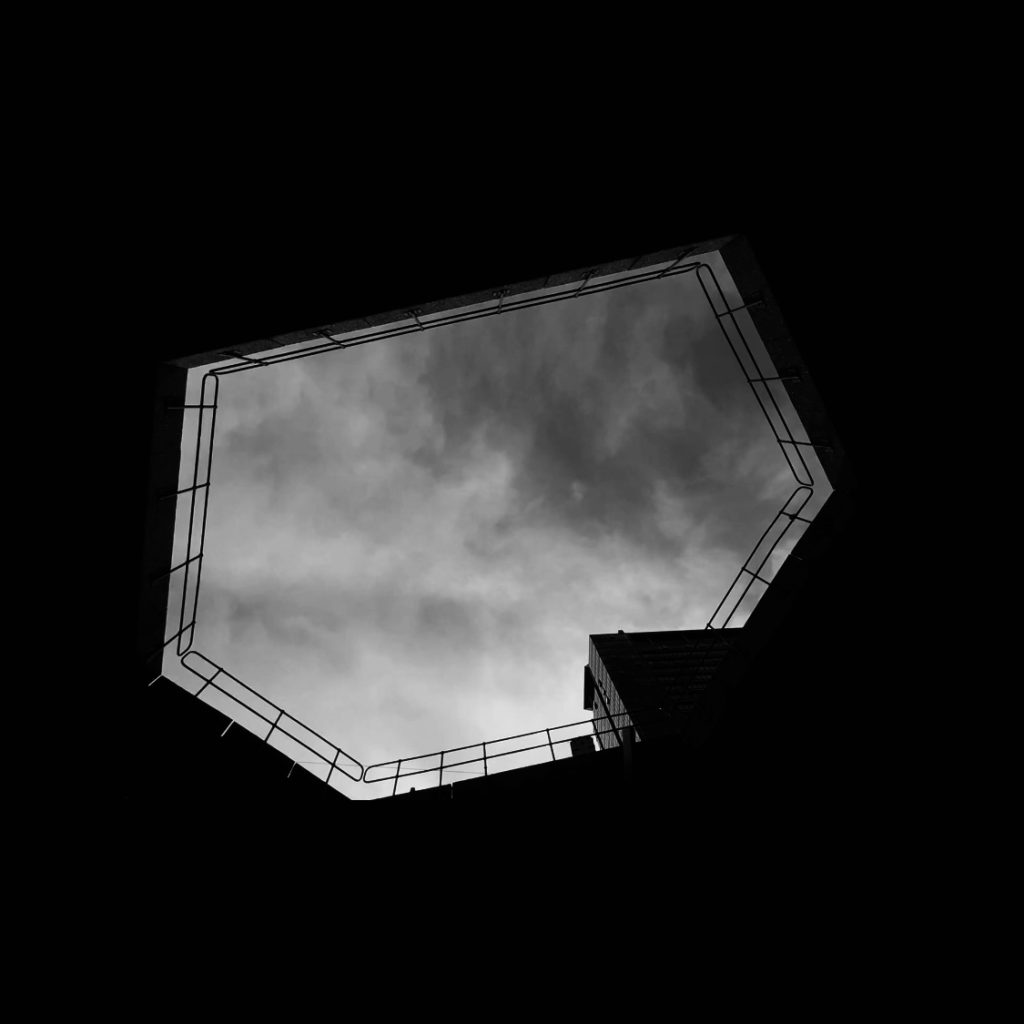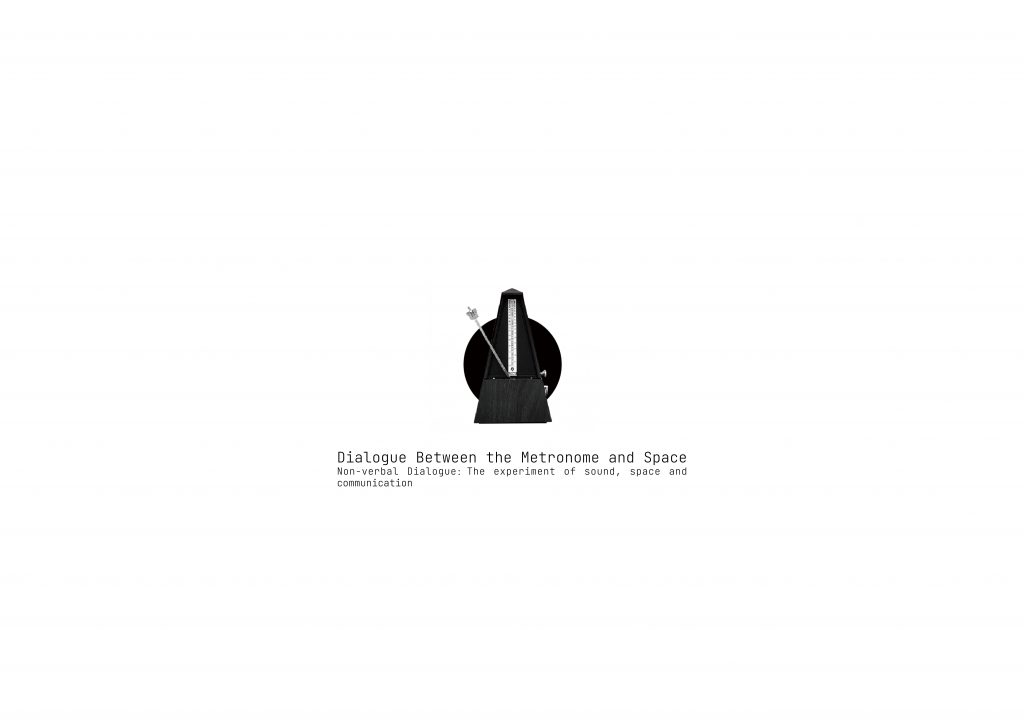
Who has the right to speak? Do animals? Does space? How do they speak? What do they say?
Is this a human privilege?
If language is not an exclusively human faculty, to what extent can rhythm and sonic structures be understood as constitutive elements of non-human grammar? Is it feasible to develop an audio-visual syntax that effectively articulates and communicates the unique Acoustic personality of space?

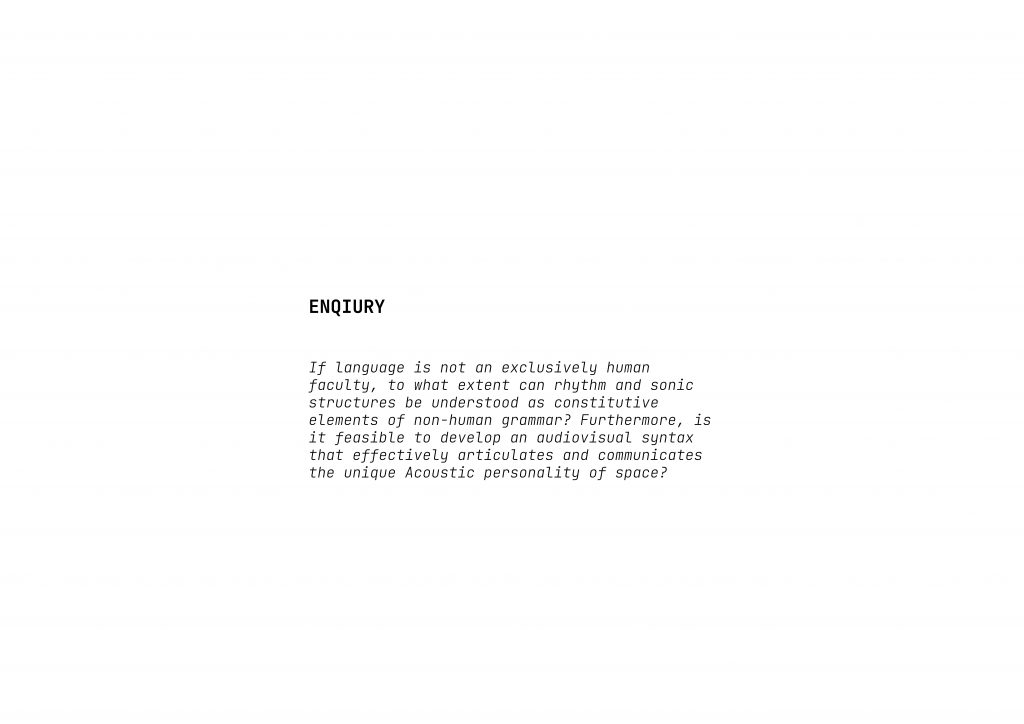

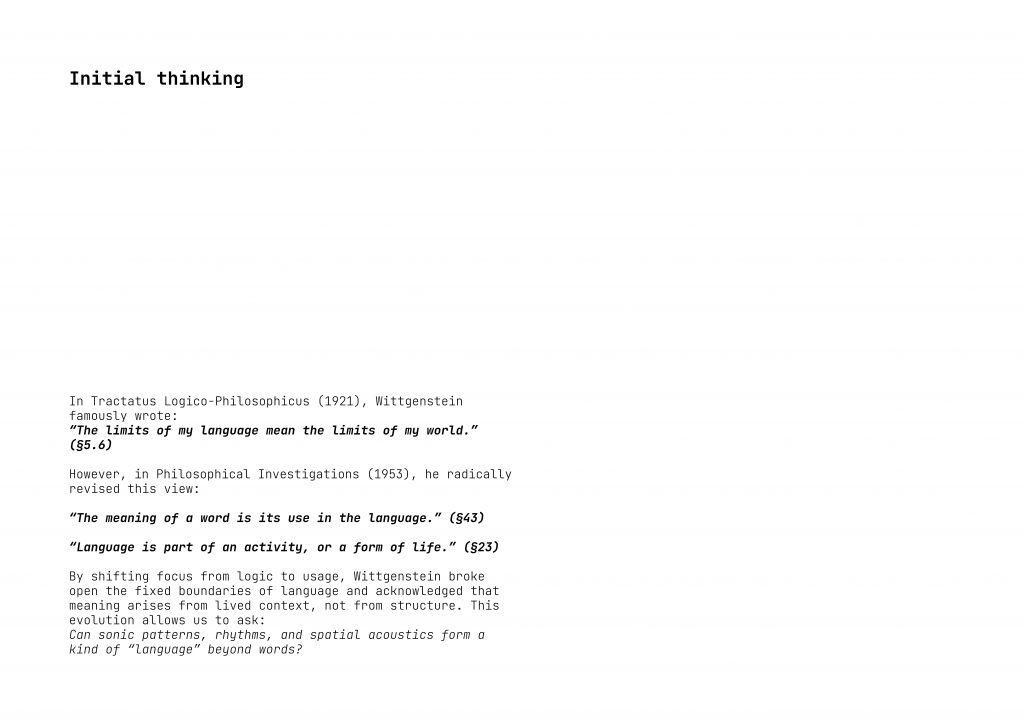
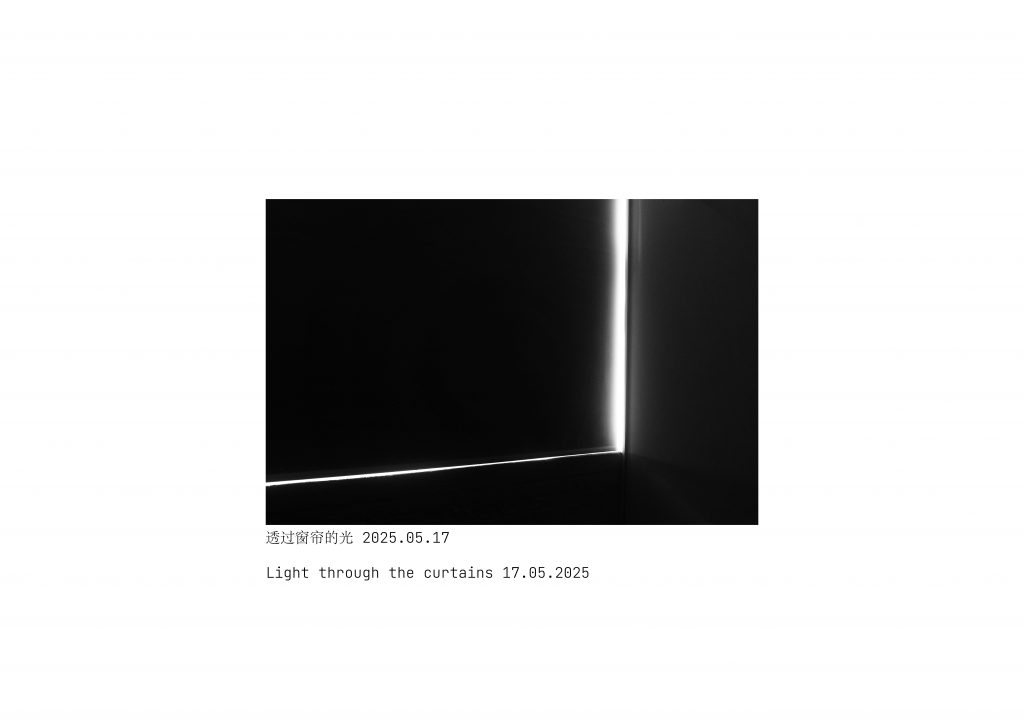
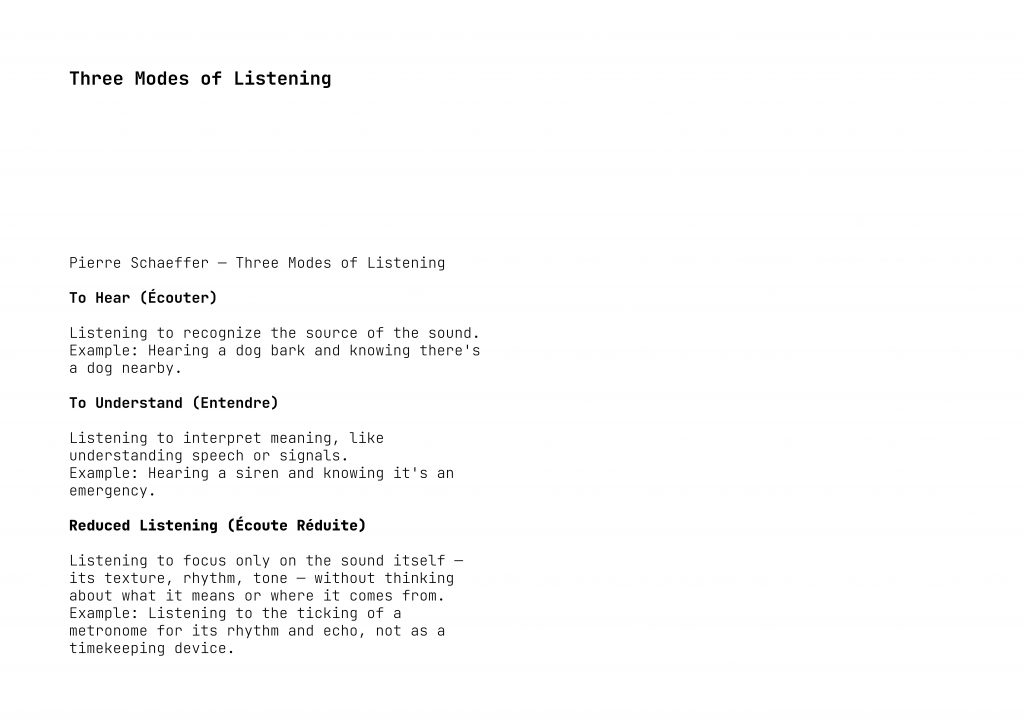
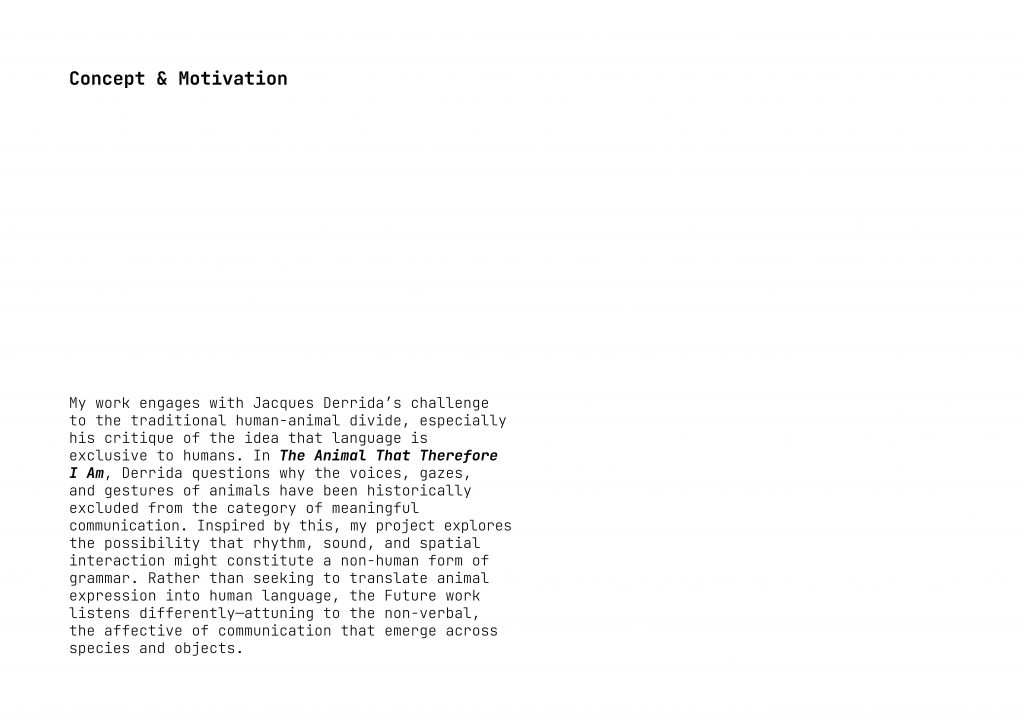
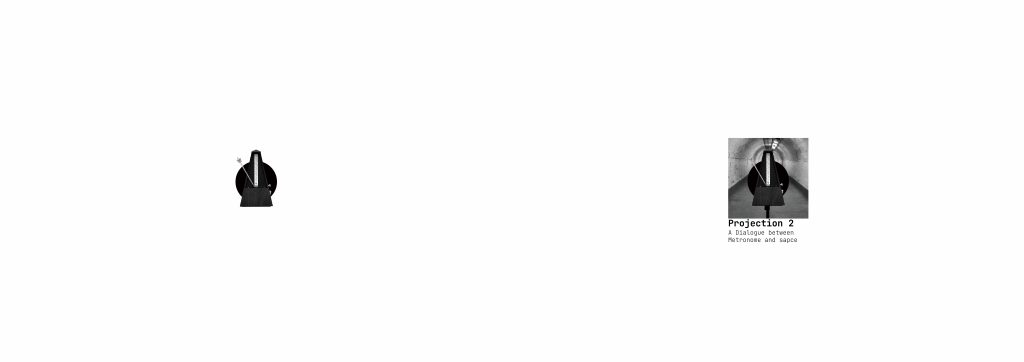
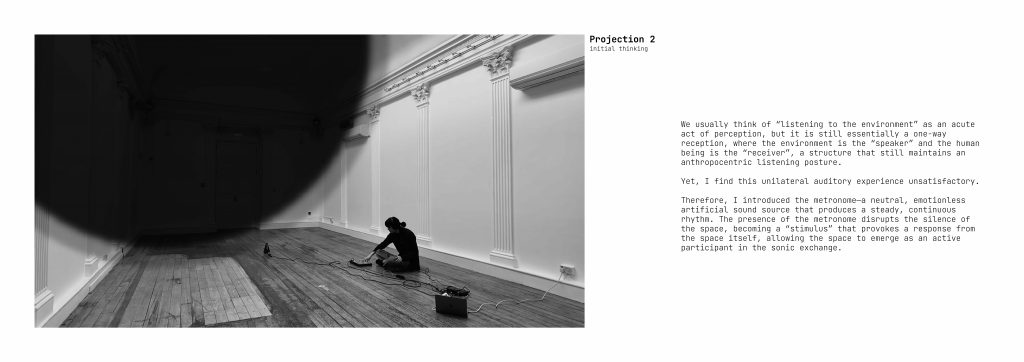

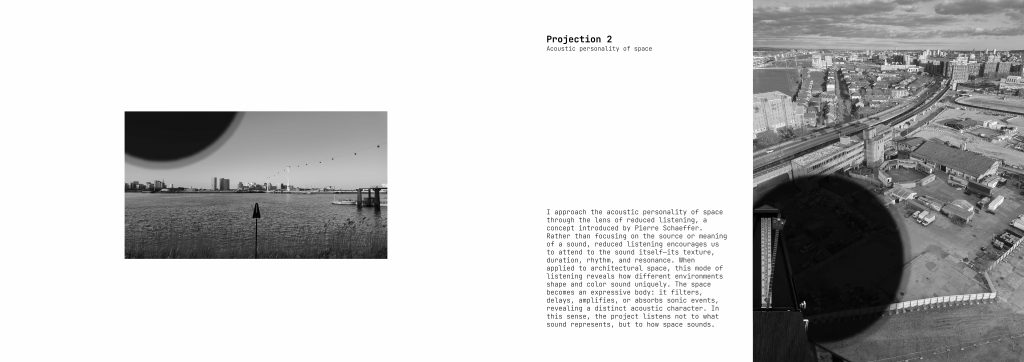
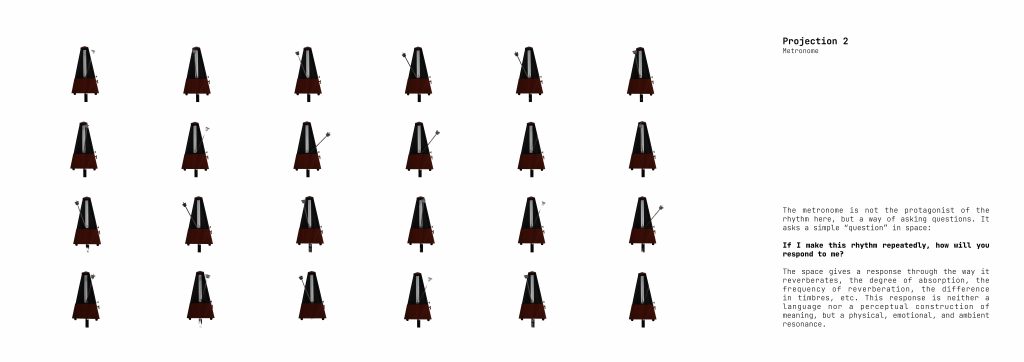
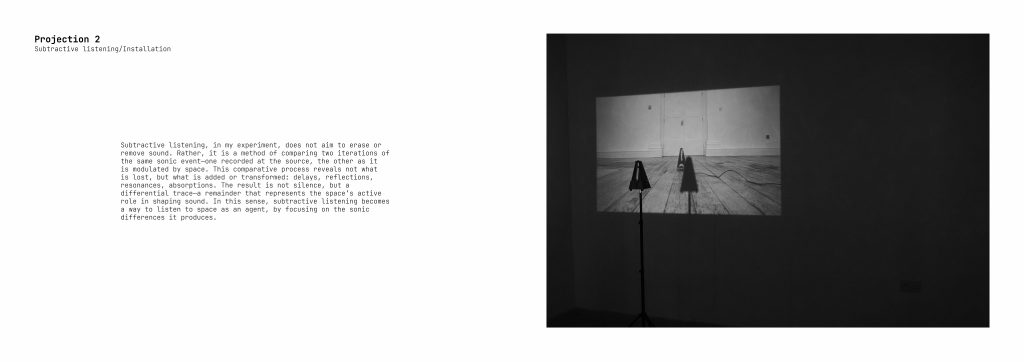
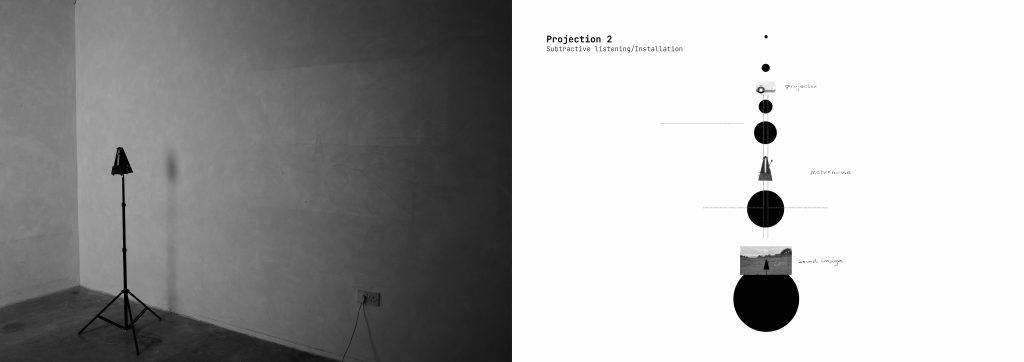


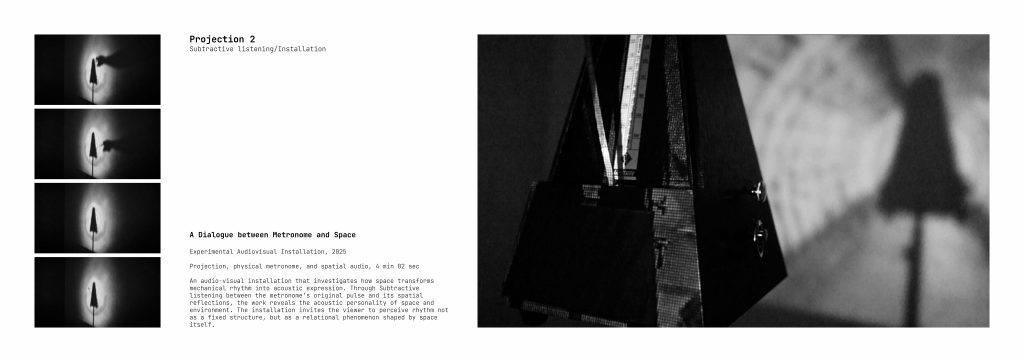

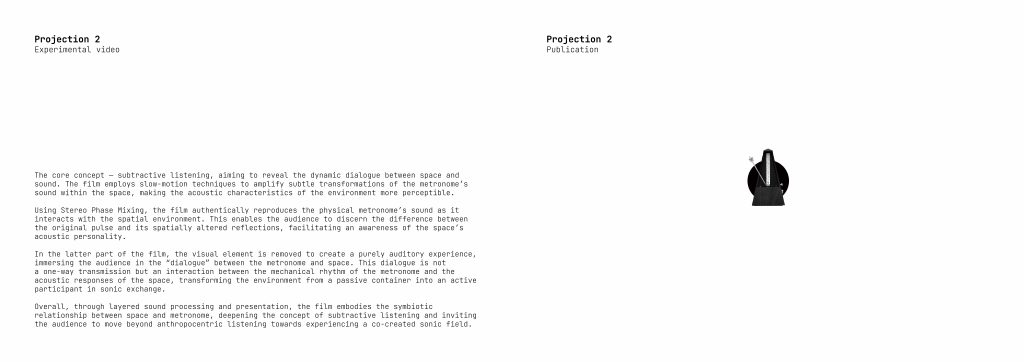

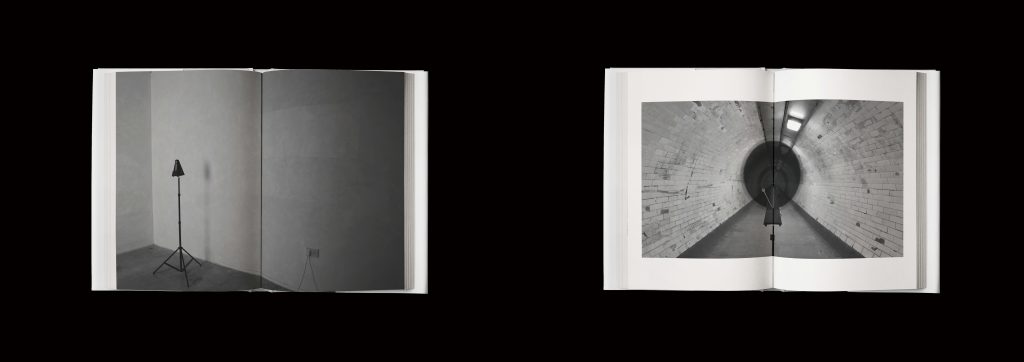
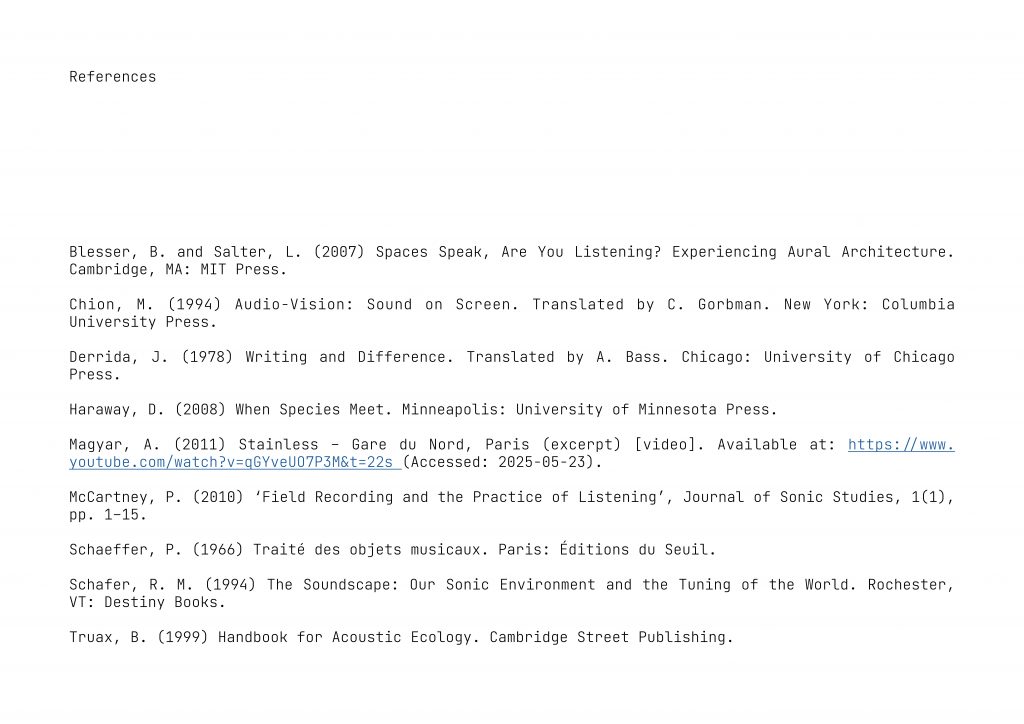
The SOMA Enner is an analog synthesizer that uses touch and the human body as part of its circuitry. The sound it generates is more than electronic signal—it’s a direct dialogue between body and space.
This experiment stemmed from my ongoing exploration of rhythm. In previous works like Metronome and Spatial Dialogue, I treated the metronome as a symbol of external order, engaging with spatial echoes and delays to build a seemingly precise yet continually disrupted temporal structure. When I introduced Enner into this context, the roles shifted: if the metronome poses questions to space, Enner allows the body itself to ask.
The sounds I created with Enner—delays, reverbs, pulses—felt like rhythms formed naturally between body and environment. Yet their unpredictable nature made me question: when rhythm loses measurability, is it still rhythm? Enner’s expressiveness brought emotional depth, but it also disrupted the structural clarity that the metronome project relied on.
Ultimately, I chose to set this experiment aside—not as a failure, but as a meaningful detour. In the dialogue between rhythm and space, some sense of order remains essential. Enner may not have fit this framework, but its raw, embodied potential points toward a new direction—perhaps the start of a future project.
This is another scrap case, and I think it would actually be a good output as an introduction to the concept about my installation. At the same time I clearly understand the problem with it, as a visual medium there is no way to convey sound, but in fact in my U2 experiments I have explored the relationship between purely visual and sound, sound because of its origin, we create images and meanings for sound, such as the sound of water flowing, the sound of a bird chirping, and we all fantasise about those scenes that have these things in them, or simply 1234, when we read it out there is an unconscious inertia of thought that leads us to think of its origin and code. When we read him, unconsciously there exists a kind of thinking inertia, which leads us to think of his origin and code, I think human beings have the ability to decode, so when I use editing techniques to play the sound of water and deprive it of water later, we can still fantasise about the sound of water flowing. This is a kind of sound imprinting, the same as visual imprinting, when we stare at the light source, when we close our eyes we can still see the light source, this imprinting is visually from some physiological reason, and the auditory imprinting is from our imagination and psychological reasons. So I think that if I show my film in my exhibition, this small experimental publication as an introduction, as well as a business card, which is disseminated and taken away, it triggers this auditory imprinting, the metronome that is slowed down, because the turning of the page, the swinging of the printed metronome in the page, extends your auditory inertia to another medium, the sound of the metronome, because the metronome, the metronome, the metronome, the metronome, the metronome, the metronome, the metronome, the metronome, the metronome, the metronome, the metronome. this process reappears. However, by now it’s more like a figment of my imagination that this seemingly pointless thing is actually a symptom of the theory of non-presentation, and the absence of presence, that I wanted to experiment with a long time ago. This actually corresponds to presentation and representation, another form of presence.
All in all, when my publication represents sounds, even produces sound in the absence of sounds, this is what this publication is about – this is the dialogue of this project with time and space.
